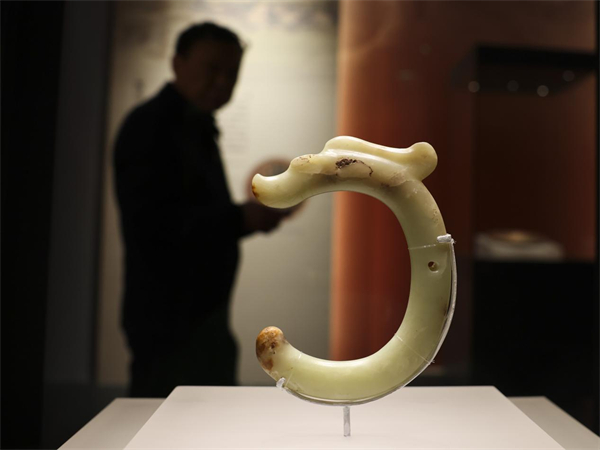Archaeological discoveries shed light on Hongshan Culture

Dragon-shaped jade from the Hongshan Culture. [Photo/IC]
Recent archaeological discoveries continue to highlight the brilliance of Hongshan Culture, a key component of early Chinese civilization. According to the Inner Mongolia Institute of Cultural Relics and Archaeology, unearthing three new jade dragon artifacts in 2024 marked the highest annual discovery of such relics in recent years.
Jade dragons are iconic representations of Hongshan Culture. One dragon discovered at the Yuanbaoshan stone mound tomb in Aohan Banner, Chifeng city, Inner Mongolia autonomous region, was 15.8 cm long, 9.5 cm wide, and 3 cm thick, making it the largest ever excavated. More than 100 other jade artifacts, including rings, discs, silkworms, and owls, were found alongside the dragon.
Hongshan Culture, an archaeological culture from the late Neolithic period in northern China, dates back approximately 6,500 years. It is believed to have entered a proto-state civilization stage around 5,800 years ago.
Hongshan Culture plays a crucial role in the study of early Chinese civilization. Its development, transformation, and subsequent influence provide valuable insights into the origins of Chinese civilization and its diverse yet unified evolution.



 Print
Print Mail
Mail





